Breaking the Ice on an Emerging Extreme Sport
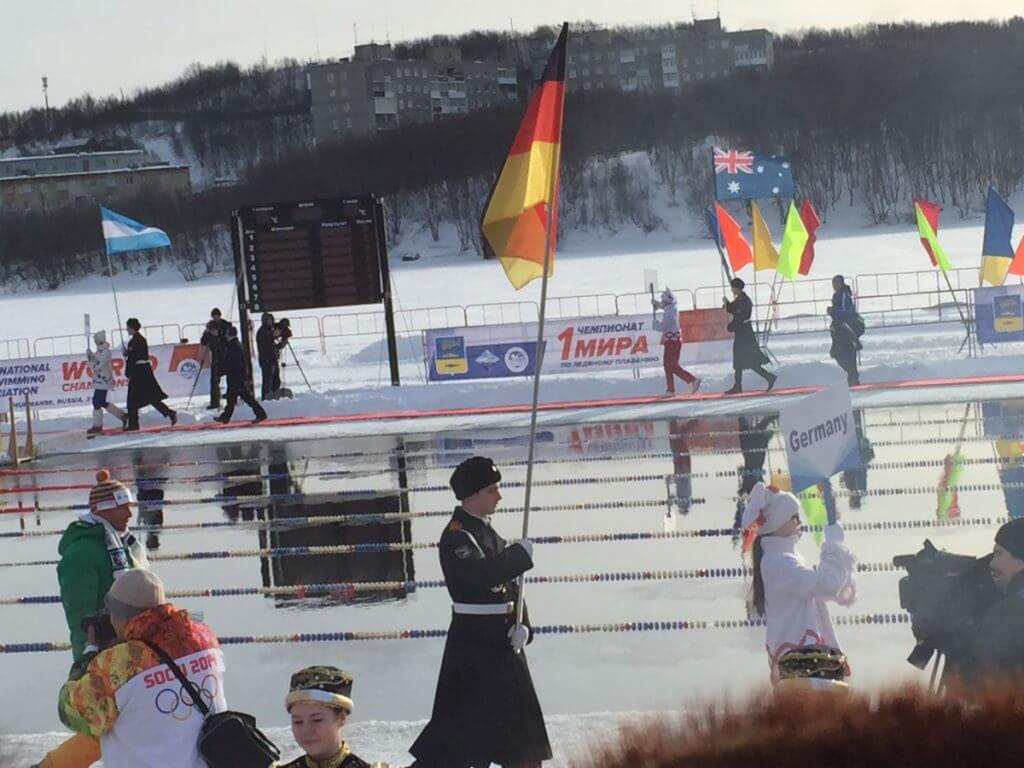
By Taylor Byers, Swimming World College Intern.
Swimmers tend to share the common trait of dragging their feet behind the blocks, prolonging the inevitable shock of the seemingly frigid water at the crack of dawn. They may shiver for the first lap, but they warm up rather quickly during the grueling sets. After all, the pool temperature typically averages between 77 and 82 degrees Fahrenheit (or 25 to 28 degrees Celsius). This is not the case for the niche sport of ice swimming.
Ice swimming is a serious emerging sport in which athletes swim in icy waters of 41 degrees Fahrenheit (five degrees Celsius) or below with only one swim cap, a pair of goggles, and a regular swim suit – meaning no wetsuit. There are two official distances in ice swimming: one is a one-mile swim and the other is a one-kilometer (1,000-meter) swim. Ice miles have been swum in 39 different countries, and there has been thousands of ice kilometer events all around the world. Depending on the competition or event, the distance can vary, but one thing is for certain: this sport is not for the faint of heart.
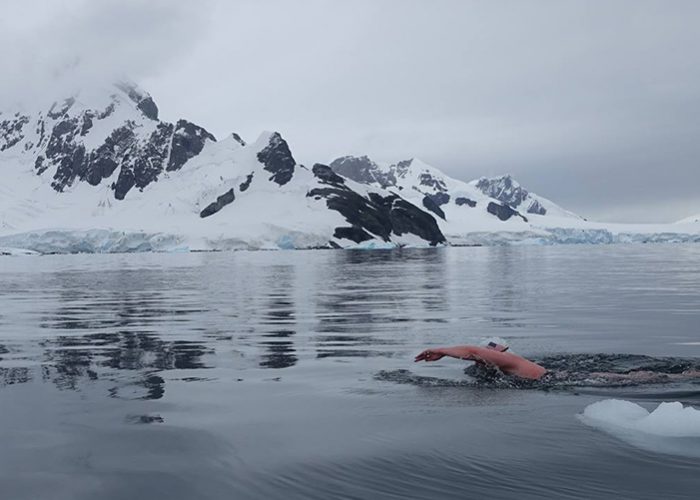
Photo Courtesy: IISA
The International Ice Swimming Association (IISA) was formed in 2009 by Ram Barkai with a vision to formalize swimming in icy water. There are three different classes of members associated with IISA. The first is a Cool member, which is anyone who wishes to associate with IISA. This could be a coach, referee, medical provider, volunteer or anyone interested in following this sport. The next membership level is a Cold member. This membership is acquired by anyone who completes a one-kilometer ice swim event and is endorsed by IISA and the event director. Cold members receive an IISA certificate. The last membership is an Ice member. This is acquired by anyone who successfully completes an accredited IISA Ice Mile. These members receive a certificate, badge and red jacket. Currently, there are 1,380 Cool Members, 309 Cold Members and 314 Ice Members.
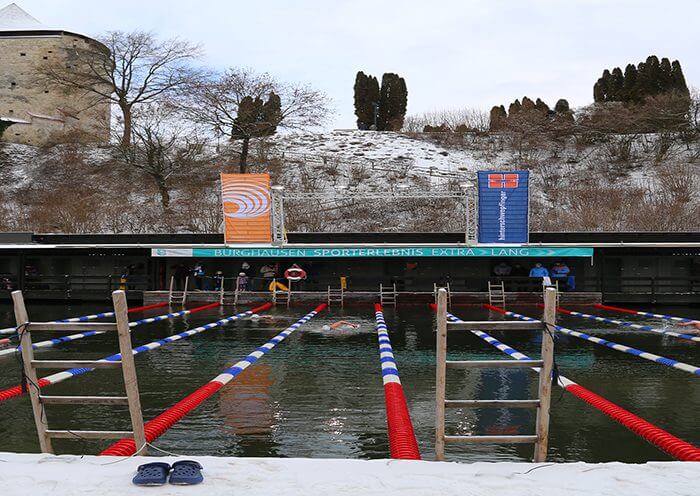
Photo Courtesy: IISA
Ice swimming is all about timing. For an average person, one minute in 41 degrees Fahrenheit water feels like an eternity. The average critical time for the body to be spent in these temperatures is just over 20 minutes. After that, the body can start to show signs of hypothermia.
Barkai explains that ice swimmers are some of the most dedicated aquatic athletes: “All of these people come from a background of swimming. Some people swam in the Olympic Games, some come from a competitive background in the pool and some are just passionate about swimming.” Ice swimming opens up an entirely new dimension of this sport. People can typically swim fast in warm water; however, some people can go just as fast in warm water as they can in ice water. It all depends on the person’s body type and how quickly their body can generate heat.
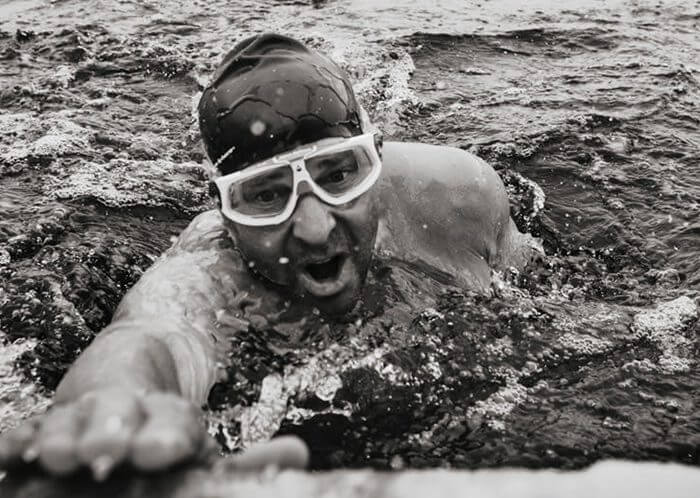
Photo Courtesy: IISA
When competing in these ice swimming events, athletes swim how they normally would except for two rules. One: there is no diving. This is a safety precaution, since these events are swum in ice water. The second rule is that there are no flip turns. This is also a safety precaution, because it is not safe for your body to do a flip turn under these conditions. The warm blood moves from the extremities of the body to the core. If a flip turn is completed, it can throw off this protective distribution of blood: the body must stay horizontal for the whole duration of the swim. Ice swimming also introduces a new element of recovery, which is re-warming. Since the body gets extremely cold during the swim, it needs direct and immediate medical attention and supervision while recovering.
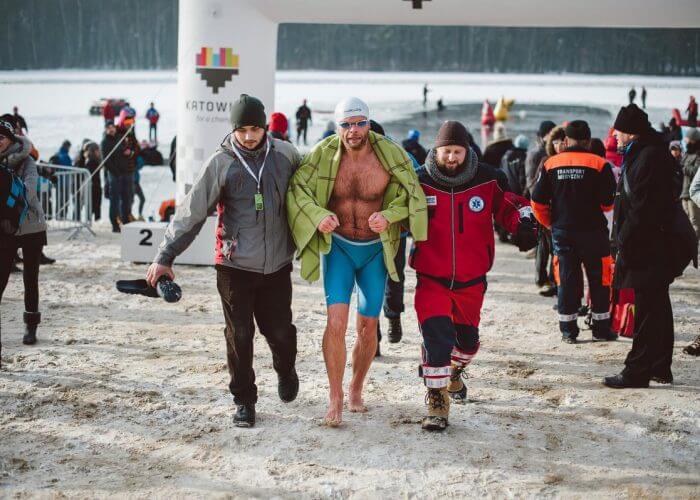
Photo Courtesy: IISA
The next big event for ice swimming is the 2019 IISA III World Championships in Murmansk, the largest city in the Arctic Circle. Taking place from March 14 through March 18, this will be the third world championships that IISA has held. The competition will take place is a 10-lane, 25-meter frozen lake. The first day of the event includes acclimation swims to get accustomed to the frigid temperatures. The next three days will include a multitude of events, the main event being the 1,000-meter swim. For the World Championship, there will be about 400 swimmers with 32 countries represented.
IISA is currently looking to attract sponsors for this emerging sport. Barkai sees ice swimming currently at its early stages with big plans for growing this sport, which would be an opportunity for companies to also grow along with the sport. Barkai mentions that the ultimate goal of the IISA is to have ice swimming become an Olympic event, as he continues to grow and establish this sport and the culture of swimming.
Would you consider competing in ice swimming events?
-All commentaries are the opinion of the author and do not necessarily reflect the views of Swimming World Magazine nor its staff. All research was conducted by the author.




Yes, in my second winter and my first in skins. Have amazed myself at the distances I can manage and would love to represent.
Have the upmost respect for all of these competitors and wish them all safe rewarms.
Yes! Took part in the first Scottish Winter Swimming Championships in Loch Tay last weekend 4.9°C. Some sun, sleet, rain and snow.
1st place in my age group for 450m which was totally unexpected. Fantastic event.